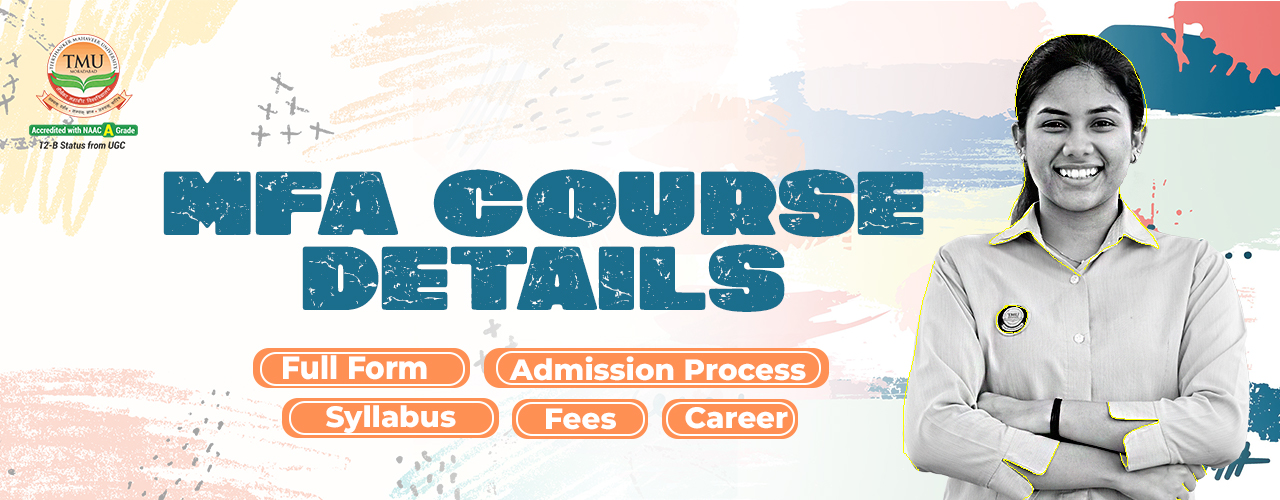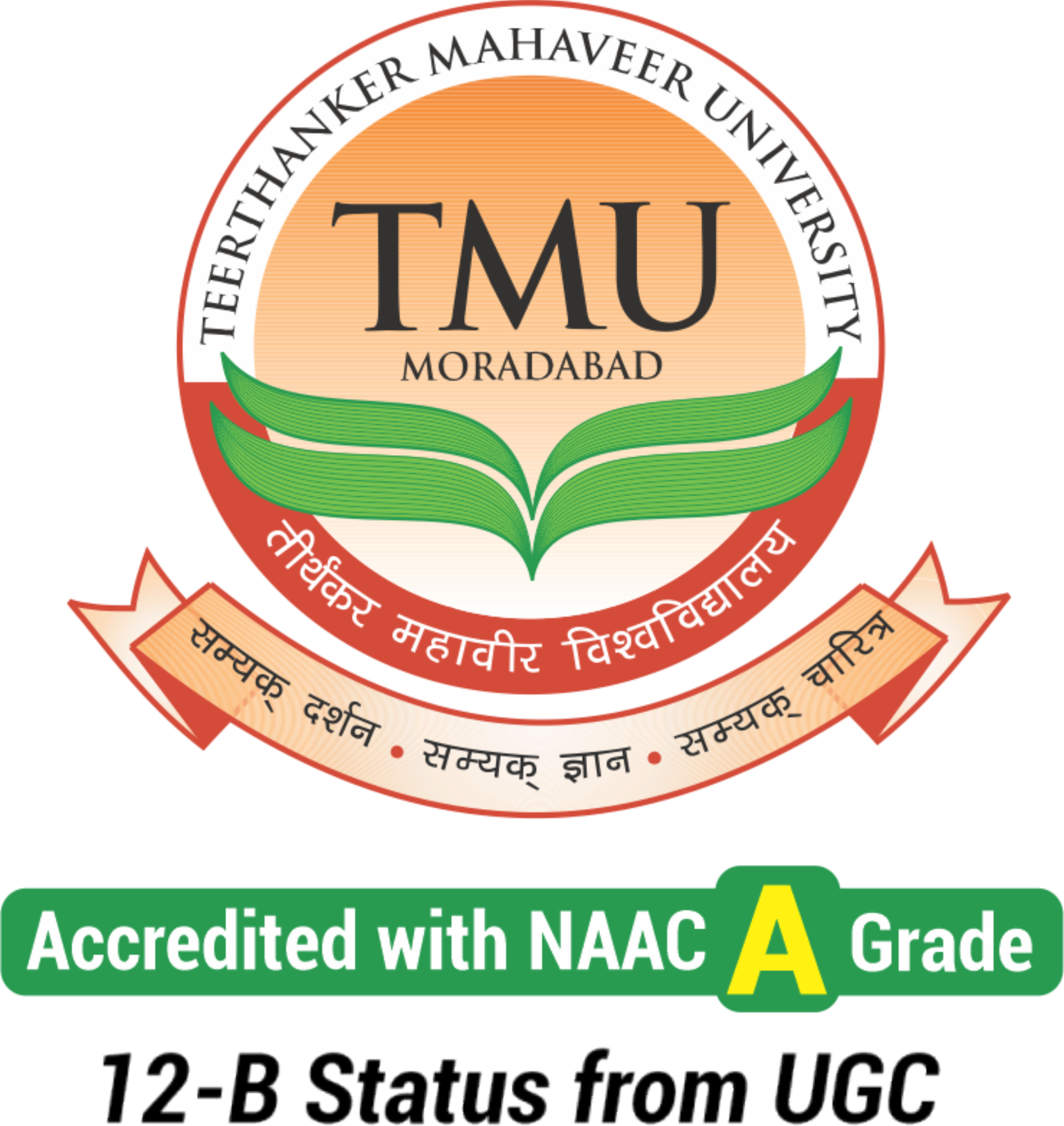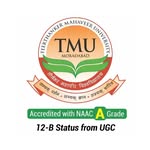MFA Course Details, Full Form, Admission Process, Syllabus, Fees, and Career Opportunities
Table of Contents
MFA (Master of Fine Arts) is a specialised postgraduate degree designed for students pursuing advanced studies in creative fields such as visual arts, performing arts, and writing. The programme typically spans two to three years and combines practical studio work, theoretical studies, and mentorship from experienced professionals.
The curriculum in a Masters of Fine Arts program includes conceptual art, studio practice, art history, and contemporary criticism, tailored to the student’s chosen specialisation. This degree equips graduates with the skills and creative insight required to excel in professional and academic artistic careers.
After earning an MFA, career paths include becoming an artist, art director, curator, or creative writer, with opportunities in teaching, galleries, and freelance work. The scope of an MFA is vast, offering professional growth in both India and globally, with higher prospects in countries with developed art industries.
What is MFA?
The Masters of Fine Arts (MFA) is a specialised postgraduate degree designed for artists seeking to refine their creative skills and professional practice. Unlike conventional academic programs, the MFA emphasises hands-on studio work, mentorship, and critical feedback, allowing students to explore advanced techniques in painting, sculpture, digital media, photography, and other art forms. Graduates of an MFA programme are well-prepared for careers as professional artists, curators, educators, designers, and creative directors, making it a highly valued degree for those passionate about the arts.
Teerthanker Mahaveer University
Apply for Admission
Click Here To Apply for Admission
Specialisations within MFA include:
- Visual Arts: painting, sculpture, photography, and digital arts.
- Creative Writing: Fiction, Poetry, Screenwriting, and Playwriting.
- Performing Arts: Dance, Theatre, and Music.
Why pursue an MFA?
MFA offers several advantages:
- Skill Development: intensive, specialised training in your chosen field.
- Professional Growth: Opportunities to build a portfolio, work with mentors, and showcase your work in public exhibitions or performances.
- Networking: You’ll connect with peers, faculty, and industry professionals, helping you establish crucial relationships in the creative world.
MFA Admission Process
Getting into an MFA program can be competitive, as institutions seek students with a demonstrated commitment to their craft.
Eligibility Criteria
Most MFA programs require:
- Bachelor’s Degree: Preferably in fine arts or a related field.
- Portfolio: A collection of your best work that reflects your style, skills, and creative vision.
Admission Requirements
- Statement of Purpose (SOP): A personal essay explaining why you want to pursue an MFA and your career goals.
- Entrance Exams and Interviews: To assess your artistic intent and dedication, some programs may require an entrance exam or an interview..
How to Choose the Right MFA Program
Choosing the right MFA program is crucial for your career development. Consider factors like:
- Faculty expertise: Look for mentors whose work aligns with your artistic goals.
- Specialisations: Does the program offer courses and training in your chosen field of interest?
- Facilities and Resources: Access to studios, equipment, and exhibition spaces plays a critical role in your learning experience.
MFA Course Structure
An MFA program typically lasts two to three years and includes the following components:
- Studio practice is where students engage in hands-on projects, create art, or develop performances.
- Theoretical Studies: Courses that dive into the history, philosophy, and critique of art, enabling students to contextualise their work.
Some programs offer flexibility through part-time or low-residency options, which allow students to work while pursuing their degree.
MFA Syllabus Overview
The MFA syllabus aims to strike a balance between practical work and theoretical understanding.
| Year | Core Focus | Subjects/Courses |
| First Year | Foundational Skills and Theory | - Introduction to Studio Practice (e.g., Painting, Sculpture, Photography)
- Art History and Contemporary Art Movements
- Conceptual Art
- Creative Writing Techniques
- Basic Visual Communication |
| Second Year | Advanced Practice and Specialisation | - Advanced Studio Work (e.g., Installation, Digital Arts, Performance)
- Theoretical Studies in Aesthetics and Criticism
- Workshops and Seminars
- Research Methodologies in Art
- Electives in Specialisation (e.g., Screenwriting, Performing Arts, etc.) |
| Final Year | Project and Exhibition | - Independent Studio Work
- Thesis or Final Project Development
- Professional Practices in Art
- Public Exhibition/Performance
- Portfolio and Presentation Skills |
Career Opportunities after MFA
An MFA provides access to a variety of career paths, including:
- Art Director: Overseeing visual content creation for media outlets, advertising agencies, or design firms.
- Professor or Lecturer: Teaching at colleges or universities.
- Gallery Curator: Managing art collections and organising exhibitions.
MFA graduates can pursue careers in the following fields if they prefer freelance or entrepreneurial work:
- Freelance Writing
- Illustration
- Photography
Challenges in Pursuing an MFA
The road to an MFA isn’t without its challenges. Financial constraints, especially for international students, and the competitive nature of the arts industry can be daunting. Additionally, balancing one’s personal creative vision with market demands is a delicate act
Conclusion
MFA is more than just a degree—it’s a transformative journey for creative individuals. It offers structured, advanced training in various artistic disciplines, a platform for showcasing your work, and numerous career possibilities. If you’re passionate about fine arts and committed to your growth as an artist, pursuing an MFA could be the next big step in your creative career.
FAQs
Q-1: What is the full form of an MFA?
Ans: MFA stands for Master of Fine Arts.
Q-2: What is the MFA course?
Ans: Master of Fine Arts (MFA) is a postgraduate course focused on developing advanced skills in creative disciplines such as visual arts, performing arts, and writing. This practice-based program typically spans 2-3 years and combines intensive studio work, theoretical studies, and research to help students refine their artistic abilities. .
Q-3: Can you pursue an MFA without a Bachelor of Fine Arts?
Ans: Yes, some programs accept students from different educational backgrounds, provided they have a strong portfolio..
Q-4: What is the average salary after an MFA?
Ans: Salaries vary, but MFA graduates can expect to earn between INR 4,00,000 and 10,00,000 annually in India and higher abroad..
Q-5: Who is eligible for MFA?
Ans: To be eligible for an MFA, candidates typically need a bachelor's degree (preferably in fine arts or a related field), a portfolio showcasing their creative work, and a statement of purpose. Some programs may also require entrance exams or interviews..















